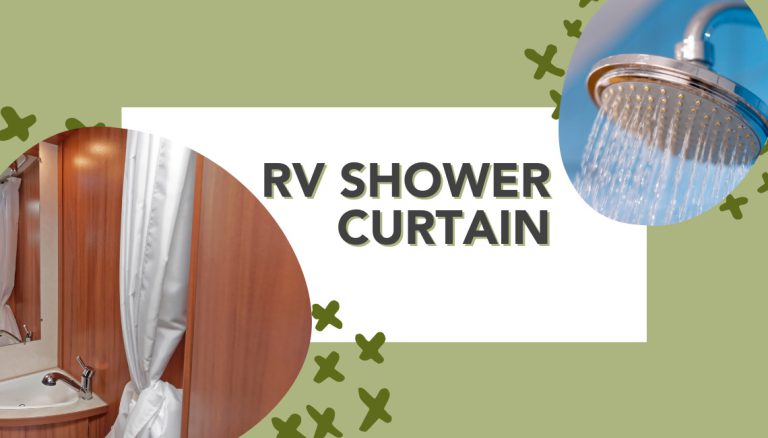


Most RVs come equipped with shower curtains. However, as is the case with shower curtains in a house, these curtains do not last forever. This means you will need to replace your curtain sooner or later, and knowing a bit about your options is always helpful.
#1: Size Matters in a Shower Curtain for an RV
You’ve probably noticed that RV showers tend to be much smaller than the showers found in traditional houses. For this reason, size is something you’ll want to think about when purchasing a shower curtain for your RV.
A regular shower curtain will likely be too big for your shower. While this doesn’t render the curtain useless, it does mean you’ll be dealing with more mildew, as large curtains tend to hold on to water. Additionally, a shower curtain that’s too long can pose a tripping hazard when showering, and will likely drag on the floor outside of the shower, causing it to become dirty.
For these reasons, we recommend purchasing an RV specific shower curtain or altering a regular curtain to suit your needs. Plastic shower curtains can simply be cut along the bottom, while fabric curtains will need to be hemmed once cut to fit.
#2: Hanging an RV Shower Curtain
Once you’ve found or created a curtain of the right size, it’s time to hang it. There are a few different ways to hand an RV shower curtain.
Sometimes there is an RV shower curtain track already installed in the bathroom. These are great, and it your track is in good working order, there is no reason not to hang the new curtain and liner using the little hooks on that track.
In cases where no track is available or the track is broken, there are a few other options. The first is to install an RV shower rod. Many people use tension rods in order to avoid screwing into their RV walls. This is the option we recommend if you choose to install an RV shower curtain rod. Curved rods are perfect for those who’d like a little more room in their shower, and they do come in tension rod form.
Another idea is to install a new track. This tends to be the best option if you’re working with a corner shower that doesn’t have any sort of door. It does take a bit of effort to put one of these in, but is super easy to deal with after the install.
#3: Keeping RV Shower Curtains Clean
With your new shower curtain in place, you’ll probably feel pretty determined to keep it looking nice for as long as possible. Making sure the curtain isn’t dragging the floor or holding onto water is a great first step in keeping it nice and clean. Other great tips include:
- Closing the curtain after showering to help it dry.
- Running the bathroom vent to reduce moisture in the bathroom.
- Laundering fabric curtains from time to time.
- Wiping plastic curtains and curtain liners down with cleaner whenever you’re cleaning the shower.
#4: RV Outdoor Shower Curtain Options
Many RVs include an outdoor shower either in addition to, or—in the case of some super small rigs—instead of an indoor shower. If you use your outdoor shower a lot, you may be in search of a bit of privacy. This is where RV outdoor shower curtains come into play.
Some people make hanging or freestanding outdoor shower stalls from PVC pipe, while others purchase an outdoor shower kit such as this one to hold their shower curtain up. Other options include a shower tent or a DIY hula-hoop shower curtain. Get creative, and you’re sure to find something that works for you!
This post may contain affiliate links

